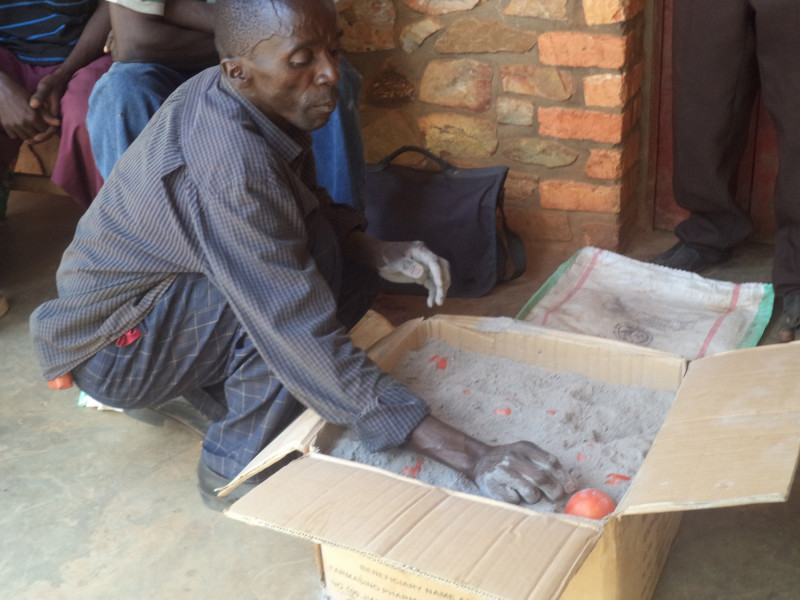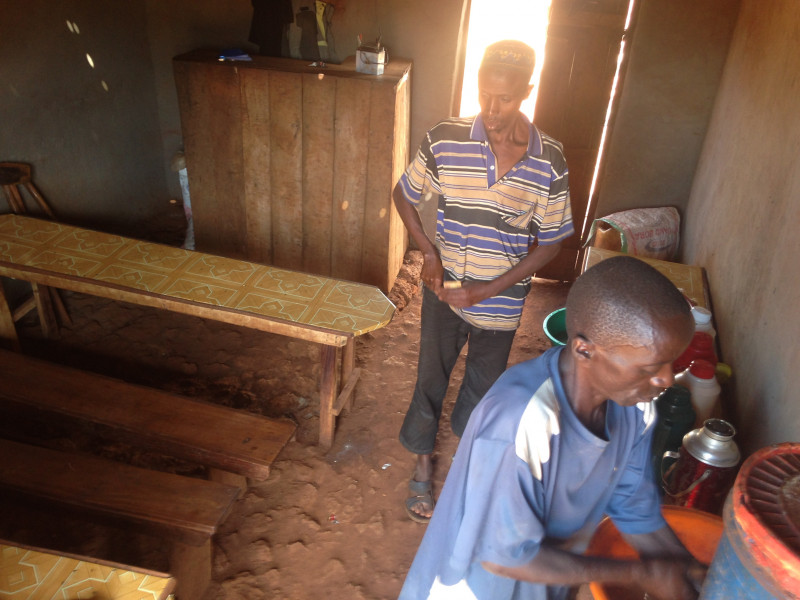Jean de Dieu Ininahazwe | November 28, 2016
Vital Nduwimana hated how many tomatoes he lost every season. For years, his tomatoes started rotting just three or four days after harvest. He felt frustrated.
Mr. Nduwimana explains: “I was not able to sell all my tomatoes; I lost almost half of my production. Worse still, I would sell at a low price in the market. So in 2015, I thought that maybe I should find a tomato conservation technique.”
Mr. Nduwimana grows tomatoes in eastern Burundi, on Kabuyenge hill, five kilometres from the Tanzanian border.
In eastern Burundi, tomatoes are abundant during the harvest months of August and September. But growers find it difficult to keep tomatoes for later sale, which leads to a large number of tomatoes rotting.
Mr. Nduwimana tried several techniques to solve his problem. He tried storing his tomatoes in water, in clay, underground, in cartons, and even in sand. He tried everything that came to his mind—but without success.
Then one day, he noticed that the tomatoes he had kept next to his banana trees were not rotten. Then he noticed the ash at the foot of the banana trees.
He decided to try keeping his tomatoes in ash and found that this was more effective than any of the other techniques he had tried.
He uses ash from a chimney, and sifts it three or four times to remove large residues, debris, and other foreign materials. Then, he dumps the ash into a paper carton and places the tomatoes in the carton. With this technique, Mr. Nduwimana manages to safely store his tomatoes for many months.
He explains: “I keep my tomatoes in the ash for a period of five to six months, so I can sell them in December, January, or February when the price has risen—since tomatoes are rare and become expensive during this period.“
Jean Nivyabandi is an agronomist. He says using ash has no negative effect on the tomatoes, which can be consumed safely. He explains, “There is no risk of tomato toxicity after storage in ash.”
Nevertheless, the agronomist wants the Institute of Agronomic Sciences of Burundi to conduct tests to scientifically validate Mr. Nduwimana’s technique.
Meanwhile, other tomato growers in Cibitoke—the main tomato-producing region of Burundi— have been inspired to try the techniques themselves.
Judith Bizmana also grows tomatoes in Cibitoke. She says: “I can normally harvest between 550 and 600 kilograms of tomatoes per season. But … I would lose nearly half of my production. Today, I rub my hands and smile all the time. Thanks to Mr. Nduwimana’s technique, I can keep my tomatoes [and] wait for the price to rise in the market, knowing that very few of them will rot.”
Meanwhile, the innovative farmer has changed his life. Mr. Nduwimana says: “With the income from the sale of tomatoes, I opened a small restaurant and I am a permanent supplier of tomatoes to restaurants in the provincial capital. I supply the whole market, and I have created jobs, too. My whole life has changed. In the future, I plan to buy a truck to transport my tomatoes.”
Mr. Nduwimana has become an ambitious entrepreneur. In July 2016, he even won an innovation competition organized by an NGO called Agakura.

